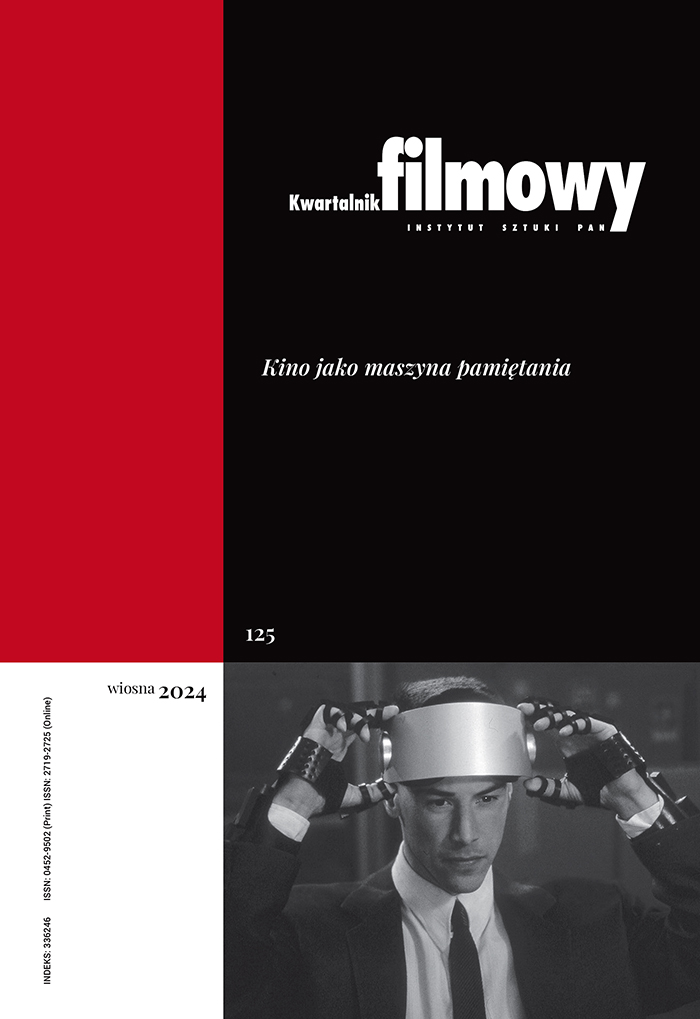Intuicja i wiedza
Abstrakt
Tekst jest recenzją książki autorstwa Anety Pierzchały Film japoński a kultura europejska. Obcość przezwyciężona?, która to praca wydana została nakładem wydawnictwa Universitas. Publikacja Pierzchały opowiada o tym, jak w twórczości japońskich reżyserów przejawiały się tropy kultury europejskiej, dzięki czemu dzieła te przekroczyły kulturowe granice Japonii i stały się zrozumiałe również dla widzów z tej części świata.
Słowa kluczowe:
Aneta Pierzchała, kino japońskie, recenzjaBibliografia
Nie dotyczy / Not applicable
Google Scholar
Autorzy
Alicja Helmankwartalnik.filmowy@ispan.pl
Uniwersytet Jagielloński Polska
Filmoznawca, muzykolog, wykłada w Instytucie Sztuk Audiowizualnych na UJ. Prowadzi badania w zakresie teorii filmu, komparatystyki. W dorobku naukowym ma ponad 20 książek autorskich, m.in.: Rola muzyki w filmie (1996), O dziele filmowym (1970 i 1981), Film faktów i film fikcji (1977), Przedmiot i metody filmoznawstwa (1985), Słownik pojęć filmowych t. 1-7 (1991-1995), Historia semiotykifilmut. 1-2 (1992-1993), Twórcza zdrada. Filmowe adaptacje literatury (1998), 100 arcydzieł kina (2000), Urok zmierzchu. Filmy Luchina Viscontiego (2002). Autorka 100 artykułów i rozpraw (w tym ok. 20 w językach obcych: angielskim, niemieckim, francuskim, rosyjskim i węgierskim), a także ok. 20 prac zbiorowych i antologii pod redakcją własną lub we współpracy z innymi autorami. Rozpoczęła kompleksowe badania nad semiotyką filmu, dokonała adaptacji i promocji neopsychologicznych koncepcji. Jest członkiem Polskiej Akademii Umiejętności, członkiem Polskiego Towarzystwa Semiotycznego, Deutsche Gesellschaft fuer Semiotic Studies, International Association for Semiotic Studies.
Statystyki
Abstract views: 775PDF downloads: 139
Licencja
Prawa autorskie (c) 2006 Alicja Helman

Utwór dostępny jest na licencji Creative Commons Uznanie autorstwa 4.0 Międzynarodowe.
Autor bądź autorka udziela wydawcy niewyłącznej i nieodpłatnej licencji (CC BY 4.0) na wykorzystanie tekstu w „Kwartalniku Filmowym”, zachowuje nieograniczone prawa autorskie i zobowiązuje się do podawania miejsca pierwodruku przy ponownym wykorzystaniu artykułu (umowa licencyjna do pobrania). Czasopismo jest wydawane na licencji CC BY 4.0. Zgłaszając artykuł do publikacji, autor bądź autorka wyraża zgodę na jego udostępnianie na tej licencji.
W wydaniach od 105-106 (2019) do 119 (2022) wszystkie artykuły były publikowane na licencji CC BY-NC-ND 4.0. W tym okresie autorzy i autorki udzielali(-ły) niewyłącznej i nieodpłatnej licencji (CC BY-ND 4.0) na wykorzystanie tekstu w „Kwartalniku Filmowym”, zachowywali(-ły) nieograniczone prawa autorskie i zobowiązywali(-ły) się do podawania miejsca pierwodruku przy ponownym wykorzystaniu artykułu.
Inne teksty tego samego autora
- Alicja Helman, Drogi rozwoju filmoznawstwa , Kwartalnik Filmowy: Nr 85 (2014): Film i media – przeszłość i przyszłość
- Alicja Helman, Obok kanonu, ale w centrum spraw , Kwartalnik Filmowy: Nr 79 (2012): Wnętrza. O filmowej przestrzeni zamkniętej
- Alicja Helman, À propos realizmu , Kwartalnik Filmowy: Nr 75-76 (2011): Oblicza rzeczywistości
- Alicja Helman, Transgresje i transformacje w twórczości filmowej Kornéla Mundruczó , Kwartalnik Filmowy: Nr 101-102 (2018): Kino europejskie XXI wieku
- Alicja Helman, Teoria opowiadania Ricka Altmana , Kwartalnik Filmowy: Nr 71-72 (2010): Narracja w filmie
- Alicja Helman, W poszukiwaniu sensu , Kwartalnik Filmowy: Nr 87-88 (2014): Film i teatr
- Alicja Helman, Wiejskie kino Zhanga Yimou , Kwartalnik Filmowy: Nr 51 (2005): Film w Azji
- Alicja Helman, Na tropach autora , Kwartalnik Filmowy: Nr 59 (2007): Autor w filmie (cz. I)
- Alicja Helman, Mizoguchi w kręgu melodramatycznej wyobraźni , Kwartalnik Filmowy: Nr 81 (2013): Dziecko i film
- Alicja Helman, W stronę syntezy , Kwartalnik Filmowy: Nr 69 (2010): Historia w filmie











